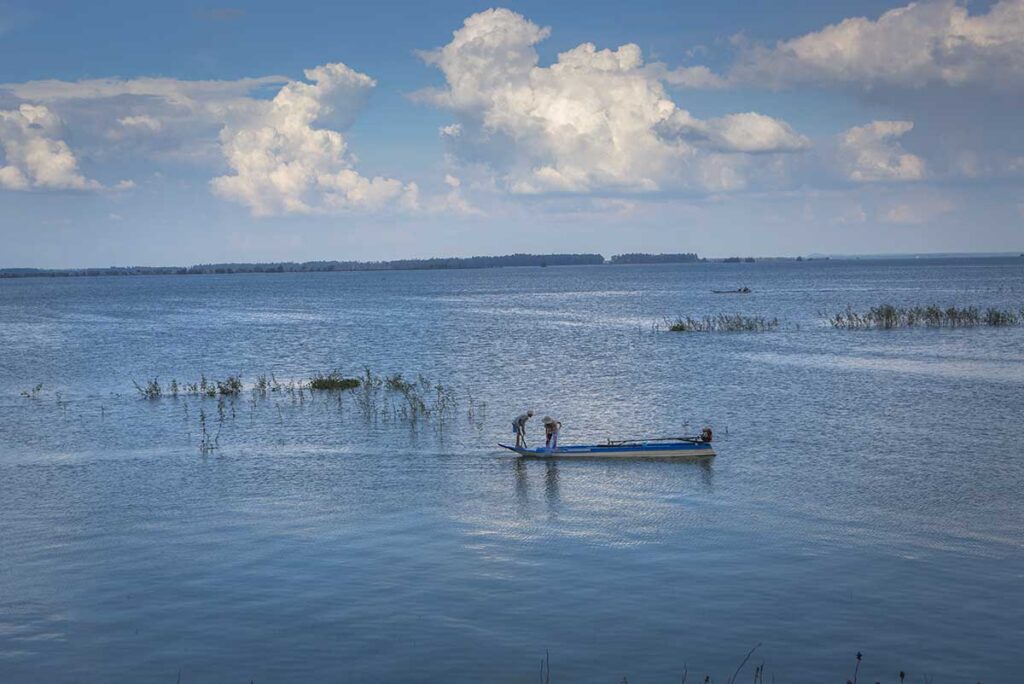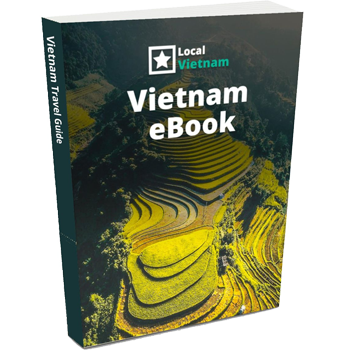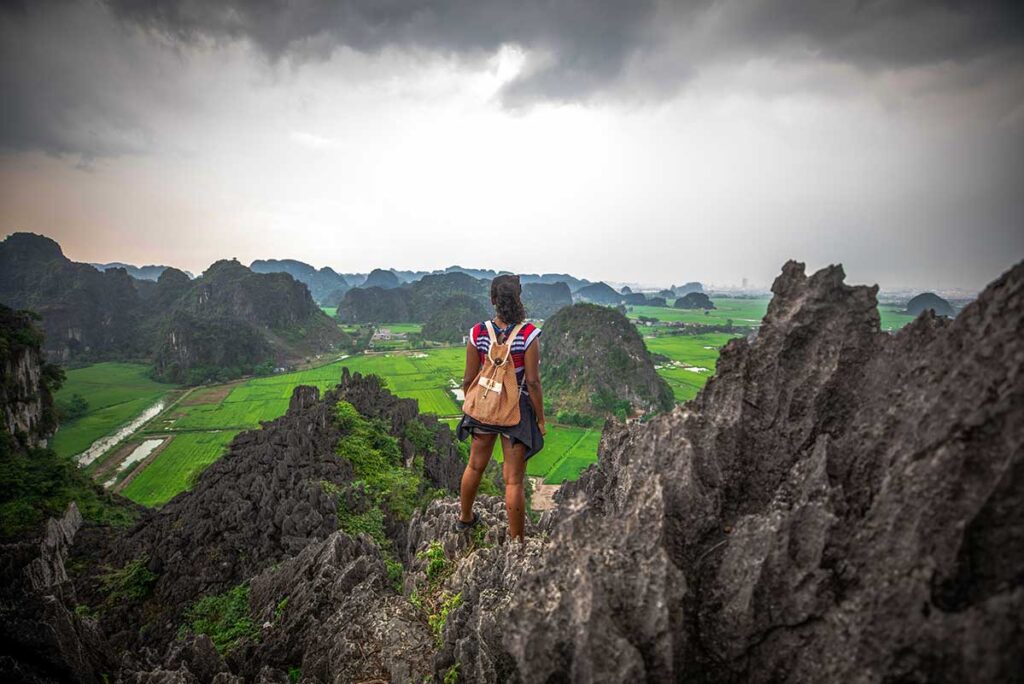What is Dau Tieng Lake?
Location & Scenery
Dau Tieng Lake spans across three provinces: Tay Ninh, Binh Duong, and Binh Phuoc. Covering around 270 km² with a storage capacity of 1.58 billion cubic meters of water, it is not only the largest reservoir in Vietnam but also one of the largest in Southeast Asia. The surroundings are mostly rural, with orchards, rubber plantations, and small villages spread along its shores. From certain points, you can see Ba Den Mountain rising in the distance, adding to the lake’s natural backdrop.
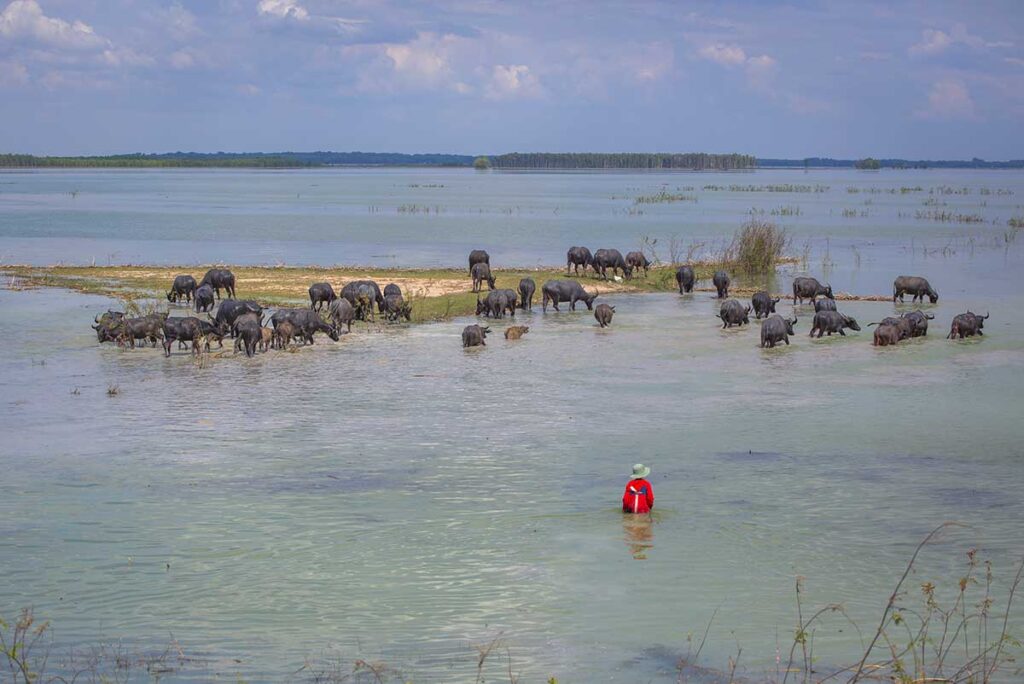
Construction of the Irrigation Project
The lake was built between 1981 and 1985 as part of a major national irrigation project, funded by a World Bank loan. It was the first construction project in Vietnam after reunification to be financed in US dollars, marking an important step in the country’s development. The project required vast land clearance and the relocation of thousands of households. Tens of thousands of workers, many of them youth volunteers, were mobilized to dig canals and build the dam, while the area still contained landmines from the war. Despite the enormous challenges, the project was completed in just four years.
Role after construction
Since its completion, Dau Tieng Lake has played a critical role in southern Vietnam’s water management. It irrigates more than 100,000 hectares of farmland in Tay Ninh and neighboring provinces, regulates the flow of the Saigon River, and helps prevent floods and saltwater intrusion downstream.
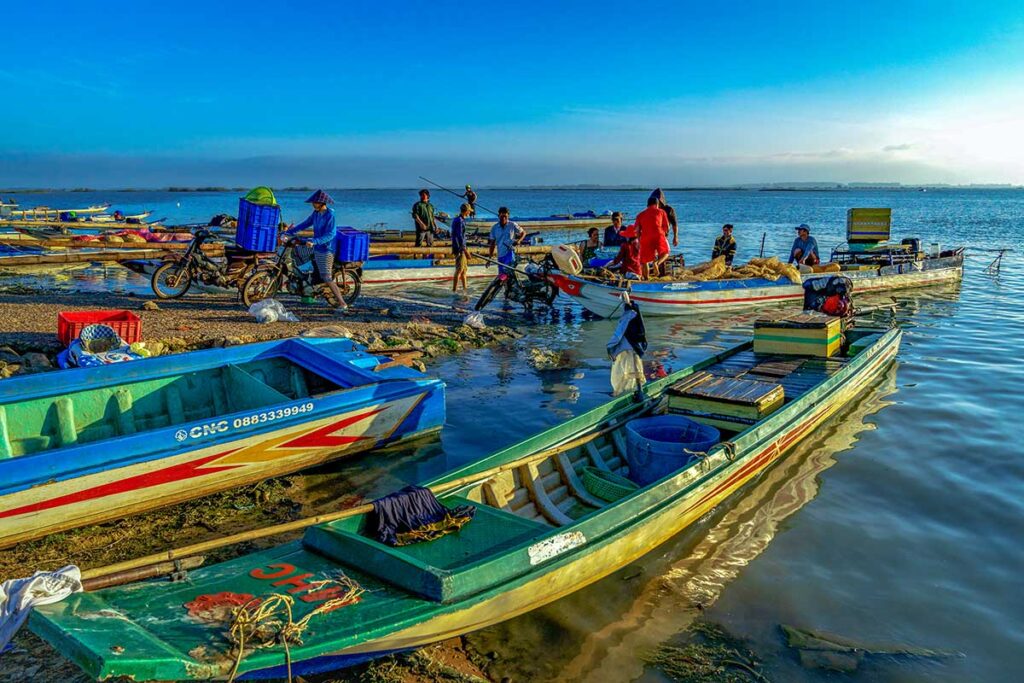
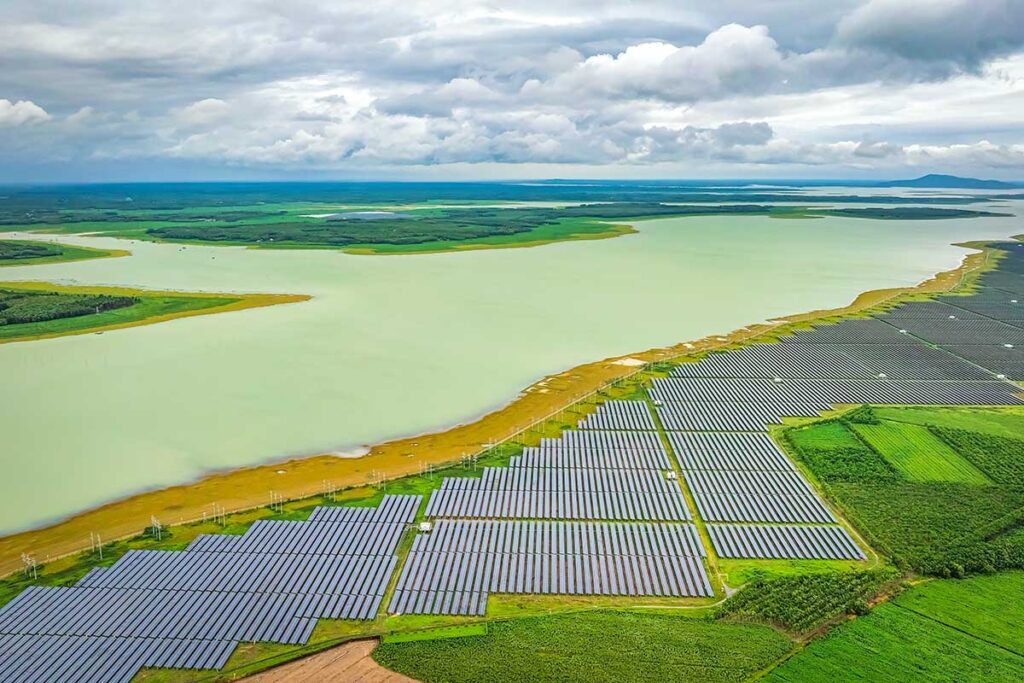
The reservoir also supports aquaculture and local fisheries, and in recent years, a floating solar power farm was built on the lake’s surface, making it a site of renewable energy production. Alongside its practical functions, the lake has gradually become a place for fishing, picnics, and weekend recreation.
Things to Do at Dau Tieng Lake
1. Admire the scenery
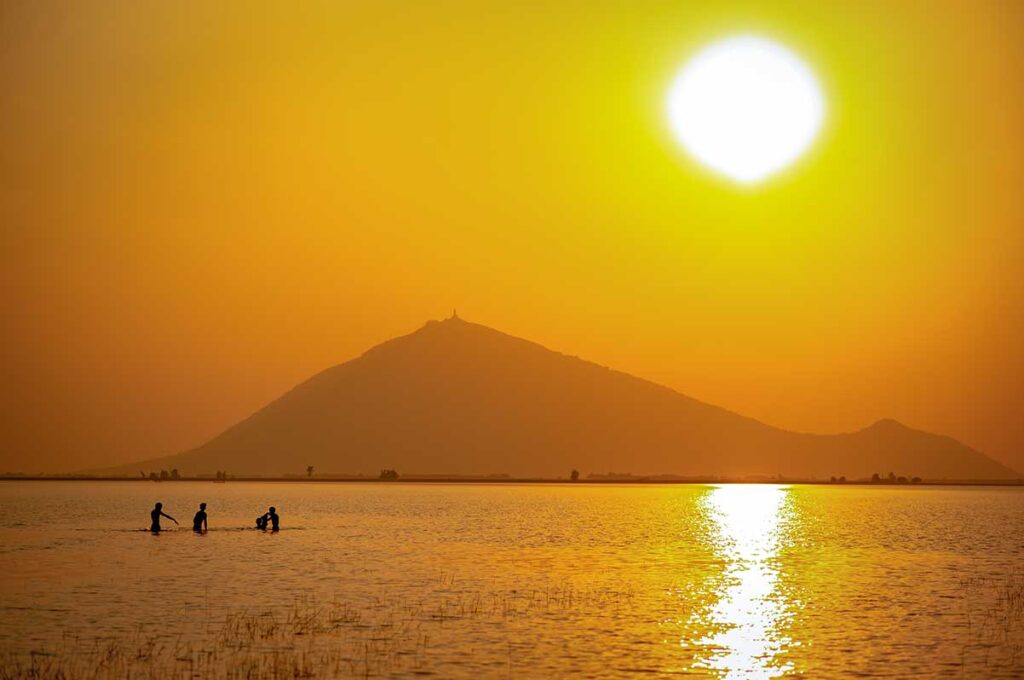
The main draw of Dau Tieng Lake is simply its vast, open setting. The wide water surface, combined with a peaceful rural atmosphere and views of Ba Den Mountain in the distance, creates a sense of space that’s hard to find near Ho Chi Minh City. Sunrises and sunsets are particularly striking, when the lake reflects the shifting colors of the sky and the scene turns into a natural watercolor painting.
2. Camping

Camping is the most popular activity for domestic visitors. Families, groups of friends, and young travelers often head to the grassy lakeshores on weekends to pitch tents and enjoy BBQs under the stars. A few providers such as Bang Lang Glamping or La Ca Camping rent tents and equipment, but most people bring their own. While this experience is well-loved locally, it may feel quite basic for short-term international travelers, as facilities are limited and the atmosphere can be noisy on busy weekends.
3. Boat Rides, SUPs & Islets

Another way to experience the lake is by canoe or boat ride to small islets such as Nhim, Sin, or Tan Thiet. These spots are covered with greenery and have a rustic, untouched feel. Exploring by boat gives you a different perspective of the reservoir, and some trips can be combined with fishing along the way. In addition, a few homestays around the lake rent kayaks or SUP boards. You can’t paddle far enough to reach the islands, but it’s still a fun way to enjoy the water and take in the quiet scenery. Don’t expect polished tourist services here—it’s more of a local, improvised experience.
4. Fishing
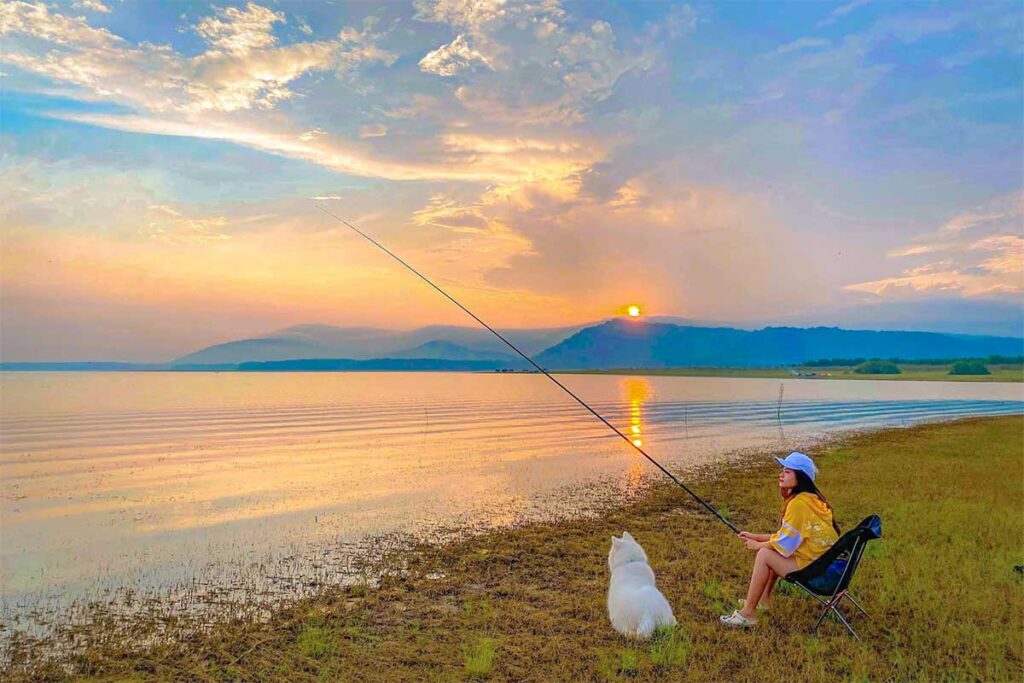
Dau Tieng Lake has a surprisingly rich aquatic ecosystem, with over 50 fish species recorded. Locals regularly fish here, either from the shore or by boat, and it’s considered a peaceful weekend pastime. Travelers can join in casually if they bring or rent a rod, but facilities for organized fishing tourism are minimal.
5. Thai Son Pagoda & Nui Cau Temple
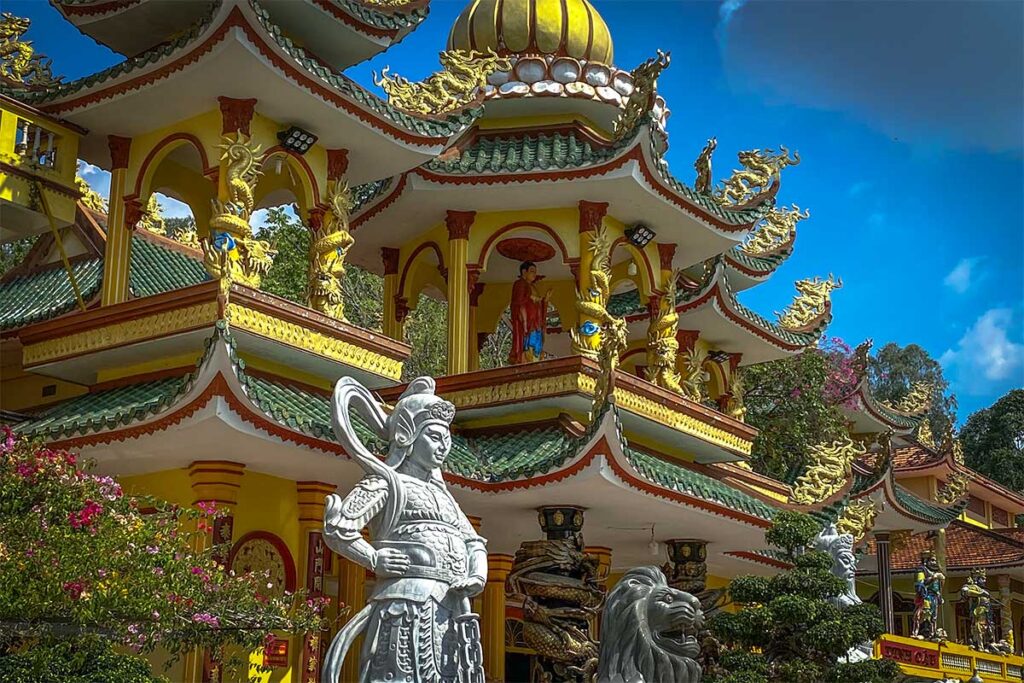
On the Binh Duong side of the lake, Thai Son Pagoda and the nearby Nui Cau Temple are quiet spiritual spots that many domestic visitors combine with a trip to the reservoir. The pagoda is colorful and peaceful, with a local, non-touristy atmosphere. Some people also come here for light trekking and meditation, making it a pleasant cultural stop if you are exploring this part of the lake.
6. Exploring rural life
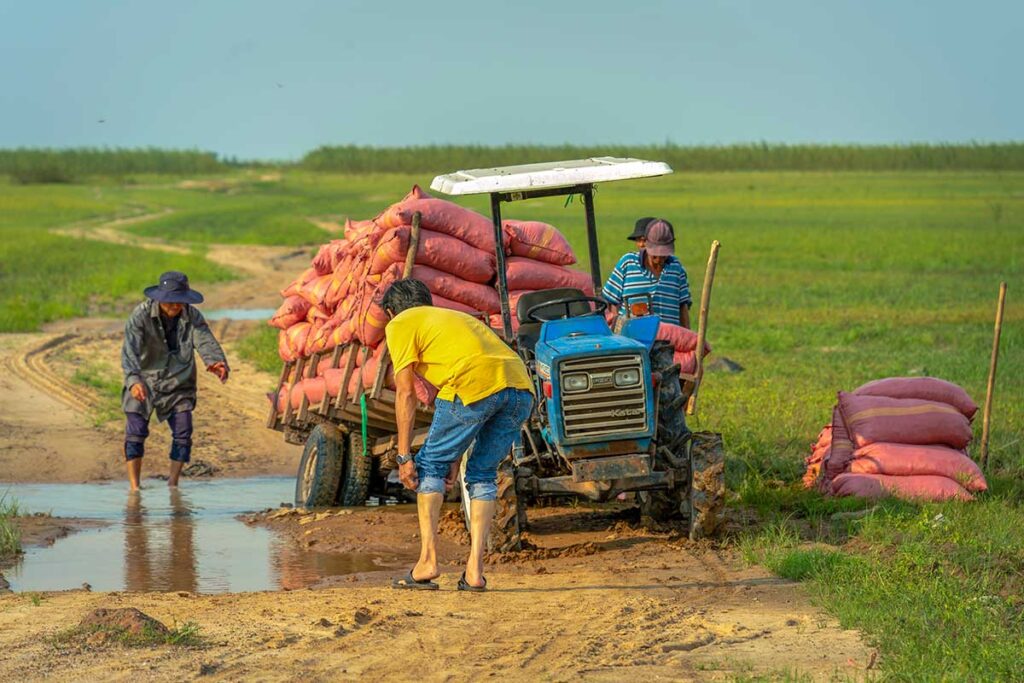
Much of the area around the lake is rural, with small villages, fruit orchards, and rubber plantations. A drive or motorbike ride around the lake takes you past farming scenes and quiet countryside roads. While there aren’t many formal tourist attractions, this kind of slow exploration gives you a glimpse of daily life in southern Vietnam’s countryside.
How to get to Dau Tieng Lake
Dau Tieng Lake is about 90 kilometers northwest of Ho Chi Minh City, which makes it a two to two-and-a-half hour journey depending on traffic and your chosen route. The most common approach is via Cu Chi and Tay Ninh, with roads passing through rural farmland before reaching the reservoir.
For transport, there are a few options:
- Motorbike – The most flexible way to reach the lake, allowing you to stop at small villages or scenic spots along the way. However, it’s a tiring ride, and roads in some areas can be bumpy.
- Private car with driver – The most practical option for most travelers, especially if carrying camping equipment or traveling in a group. This provides comfort and avoids the stress of navigating.
- Local buses or taxis – Connections are limited and not well organized for tourists. You may need to combine bus rides with taxis or motorbike taxis to reach the lake itself.
Because of the limited facilities around the lake, most visitors arrange private transport, either as a day trip or combined with nearby attractions in Tay Ninh.
Nearby sights
Since Dau Tieng Lake is often visited as part of a wider trip in Tay Ninh or on the route from Ho Chi Minh City, it makes sense to combine it with other attractions nearby:
- Black Virgin Mountain (Ba Den Mountain) – The highest peak in southern Vietnam, famous for its modern cable car system, hiking trails, and sacred temples. It’s one of Tay Ninh’s main landmarks and lies around 30 km from the lake.
- Cao Dai Holy Temple (Tay Ninh) – The spiritual center of Caodaism, a unique Vietnamese religion blending elements of Buddhism, Christianity, Taoism, and Confucianism. The temple’s architecture and colorful ceremonies make it one of Tay Ninh’s highlights.
- Cu Chi Tunnels – A vast underground network used during the Vietnam War, located directly on the route from Ho Chi Minh City to Dau Tieng Lake. Many travelers combine a tunnel visit with further exploration into Tay Ninh.
- Duong Minh Chau Rubber Forest – A quiet spot known for straight lines of rubber trees, particularly scenic during the leaf-shedding season. It’s a popular stop for photography on the way to or from the lake.
Tips for visiting Dau Tieng Lake
- Bring your own food & drinks – There are very few restaurants or shops near the lake, so it’s best to prepare in advance if you plan to camp or picnic.
- Best time to visit – The dry season from December to April offers the most pleasant conditions, with clear skies and comfortable weather for camping, fishing, and enjoying sunsets.
- Avoid weekends and holidays – The lake is a popular spot for domestic travelers, and it can become crowded and noisy with large groups, especially during Tet.
- Expect basic facilities – Don’t count on reliable toilets, waste bins, or organized services. Bring essentials like water, flashlights, and trash bags.
- Swimming not recommended – The water quality is uncertain, and some areas are known to be polluted. It’s better to enjoy the lake from the shore or by boat.
- Check water release schedules – During the rainy season, the dam may discharge water, which can affect camping spots and activities around the lake.
Is Dau Tieng Lake worth a visit?
For most foreign travelers, Dau Tieng Lake is not a must-see destination. It is primarily a domestic spot for camping, fishing, and weekend picnics, with limited facilities and few attractions tailored to international visitors.
That said, it can be a decent getaway for expats living in Ho Chi Minh City who want open space, quiet scenery, or a simple camping trip by the water. For short-term visitors, however, Vietnam offers many more rewarding nature destinations—such as Cat Tien National Park, Dalat, or the Mekong countryside—that combine scenery with more activities and better infrastructure.
